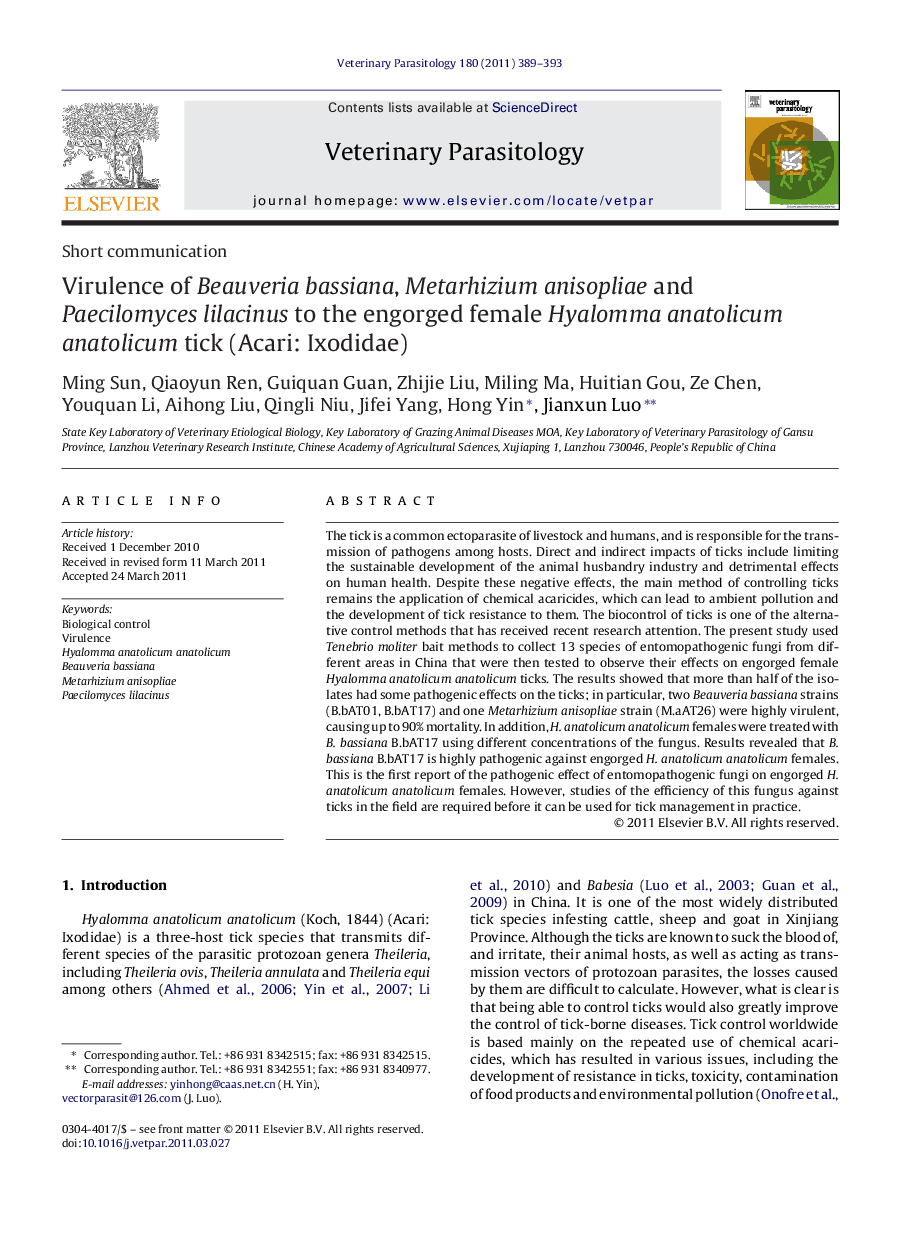| Article ID | Journal | Published Year | Pages | File Type |
|---|---|---|---|---|
| 5805749 | Veterinary Parasitology | 2011 | 5 Pages |
The tick is a common ectoparasite of livestock and humans, and is responsible for the transmission of pathogens among hosts. Direct and indirect impacts of ticks include limiting the sustainable development of the animal husbandry industry and detrimental effects on human health. Despite these negative effects, the main method of controlling ticks remains the application of chemical acaricides, which can lead to ambient pollution and the development of tick resistance to them. The biocontrol of ticks is one of the alternative control methods that has received recent research attention. The present study used Tenebrio moliter bait methods to collect 13 species of entomopathogenic fungi from different areas in China that were then tested to observe their effects on engorged female Hyalomma anatolicum anatolicum ticks. The results showed that more than half of the isolates had some pathogenic effects on the ticks; in particular, two Beauveria bassiana strains (B.bAT01, B.bAT17) and one Metarhizium anisopliae strain (M.aAT26) were highly virulent, causing up to 90% mortality. In addition, H. anatolicum anatolicum females were treated with B. bassiana B.bAT17 using different concentrations of the fungus. Results revealed that B. bassiana B.bAT17 is highly pathogenic against engorged H. anatolicum anatolicum females. This is the first report of the pathogenic effect of entomopathogenic fungi on engorged H. anatolicum anatolicum females. However, studies of the efficiency of this fungus against ticks in the field are required before it can be used for tick management in practice.
